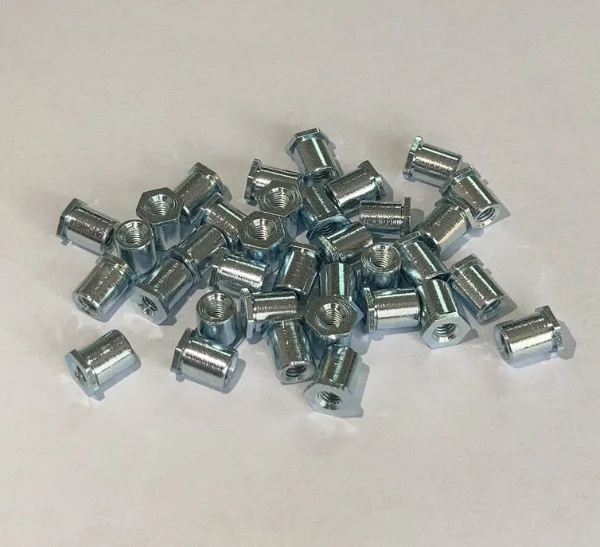views
Nuts are parts that tightly connect mechanical equipment, and are also called root nuts, anti-loosening nuts, or nipples. The main purpose is to lock the outer joint of the harness or other pipe fittings.
The working principle of the nut is self-locking by the friction between the nut and the bolt. However, the reliability of this self-locking under dynamic load will be reduced. In some important occasions, we will take some anti-loosening measures to ensure the reliability of the nut locking. The use of a lock nut is one of the anti-loosening measures.
The anti-loosening effect of the lock nut mainly depends on the interaction force between the nut and the bolt engaging thread. There are many ways to improve the interaction force between meshing threads, such as structural improvement of nut threads, nylon roughening of nylon nuts, and surface treatment of threads.
Types of lock nuts
The first is to use two identical nuts to screw on the same bolt, and add a tightening torque between the two nuts to make the bolt connection reliable.
The second type is a special lock nut, which needs to be used with a lock washer. The special lock nut is not a hexagonal nut, but a middle round nut. There are 3, 4, 6 or 8 gaps on the circumference of the nut. These gaps are not only the focus of the tightening tool, but also the prevention. Loosen the snap-in place of the gasket bayonet.
The third type is to drill through threaded holes from the outer surface of the nut to the inner thread surface (usually two, distributed at 90 on the outer surface), which are used to screw in small diameter countersunk screws for the purpose of threading Apply a centripetal force to prevent the lock nut from loosening. This kind of lock nut has gradually begun to be used in the occasion of the shaft end locking of rotating parts, such as the anti-loosening of the bearing at the mounting end of the ball screw.

The fourth type of lock nut is composed of two parts, each part has a staggered cam. Because the internal wedge design slope angle is greater than the bolt nut angle, this combination is tightly bitten into a whole, when vibration occurs When the anti-loosening nut protruding parts are staggered to each other, the lifting tension is generated, so as to achieve a perfect anti-loosing effect.
The fifth type is structural anti-loosening. Through the design improvement of the thread structure, a self-locking function is obtained without the help of other external factors. Therefore, its applicability is wider than the above-mentioned methods, and the requirements for the environment are also relatively more. Low. There are many types of locknuts, such as nylon nuts and flange nuts. In short, this kind of locknut is used to prevent loosening. Twist the nut onto the screw, screw, bolt, etc., so that it won’t come loose. They can be actively connected together, so that they are firm and stable to a high degree.
Qisheng Metal Technology Co., Ltd. is a professional manufacturer of fastener products including R&D, production, processing and sales. Specializing in the production of special precision screws and nuts of various standards such as national standard GB, Japanese standard JIS, British BS, American ANSI, ISO and so on. Our equipment is advanced. At present, the smallest screw diameter that our company can produce is 0.4mm, the shortest is 0.4mm, and the longest is 300CM. The materials used are stainless steel SUS304/SUS410/SUS 430/SUS620, etc., red copper H95, brass C2700, aluminum 6061, titanium TI 04, etc. Our products can meet the environmental testing standards of the European Union, the United States, Japan and other countries, and even more stringent testing standards. At present, our highest salt water anticorrosion standard can reach 2000 hours, and the surface hardness can reach HV2000.
With the rigorous attitude of striving for perfection, we will cooperate with customers' production needs as soon as possible, and win the greatest satisfaction of customers! Look forward to working with you!











